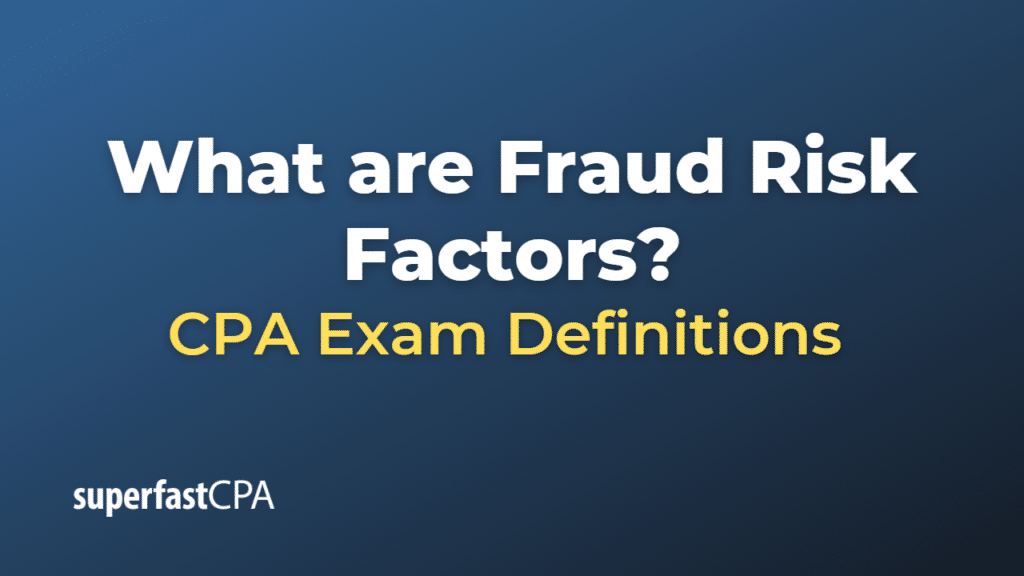Fraud Risk Factors
Fraud risk factors are conditions or situations that present opportunities for fraud to occur. These factors can increase the likelihood of fraud happening within an organization, and they typically fall into three categories, known as the Fraud Triangle: opportunity, pressure (or incentive), and rationalization.
- Opportunity: This is the situation that allows fraud to occur. Weak internal controls, lack of supervision, or access to cash and other valuable assets can provide opportunities for fraud. For example, if one person is responsible for receiving, recording, and depositing cash, they have an opportunity to commit fraud.
- Pressure (or Incentive): This is the motivation or incentive to commit fraud. Personal financial problems, high personal debt, or unreasonable performance targets at work can create pressure that leads to fraud. For example, a salesperson might feel pressured to misrepresent sales numbers to meet a sales target.
- Rationalization: This is how the person committing fraud justifies their actions. They might think the company won’t miss the money, they’re just “borrowing” it and will pay it back, or they feel they deserve more pay for their work.
In addition to these, the ACFE (Association of Certified Fraud Examiners) has identified some common red flags associated with fraudsters, including:
- Living beyond their means
- Financial difficulties
- Unusually close association with vendors or customers
- Control issues or unwillingness to share duties
- Divorce or family problems
- Unwillingness to take vacations (which might lead to their fraud being discovered by a person covering their duties)
While the presence of these risk factors does not necessarily mean that fraud is happening, they increase the likelihood of fraudulent activity. Therefore, organizations should be aware of these factors and take steps to mitigate these risks where possible.
Example of Fraud Risk Factors
Let’s consider an example involving a mid-level manager in a company. We’ll call this manager John.
Opportunity: John is responsible for approving expenses from his department. There are no secondary checks or approval required for these expenses. This lack of internal control provides John with an opportunity to approve fraudulent expenses.
Pressure (Incentive): John has recently undergone some personal financial difficulties due to unexpected medical bills. His salary isn’t sufficient to cover these extra costs, creating a pressure or incentive for him to find additional funds.
Rationalization: John feels that he’s been overlooked for promotions and raises, despite his long service and dedication to the company. He begins to rationalize that the company owes him more than he’s been paid, which helps him justify his decision to commit fraud.
In addition, John demonstrates a few red flags that often correlate with fraud:
- John has been living beyond his means, frequently talking about expensive purchases that seem beyond his salary.
- He’s been reluctant to take vacations, citing his dedication to his job. This could be because he’s worried his fraudulent activity will be discovered if someone else assumes his responsibilities temporarily.
In this situation, John’s opportunity, pressure, and rationalization, combined with the red flags he’s demonstrating, create a high risk of fraud. If the company were aware of these factors and attentive to such signals, they might take action (like adding secondary approval for expenses or investigating John’s financial transactions) to prevent potential fraud.













